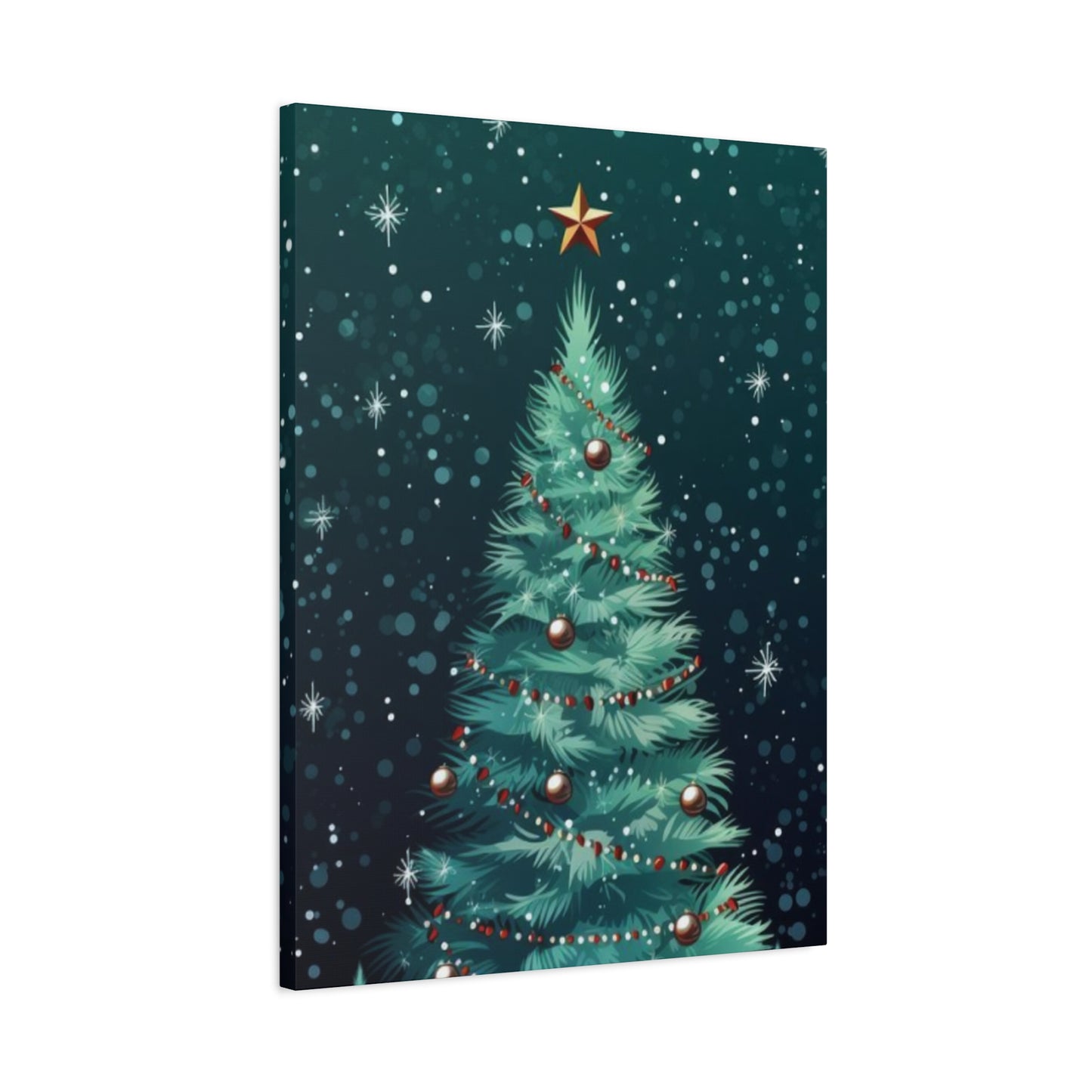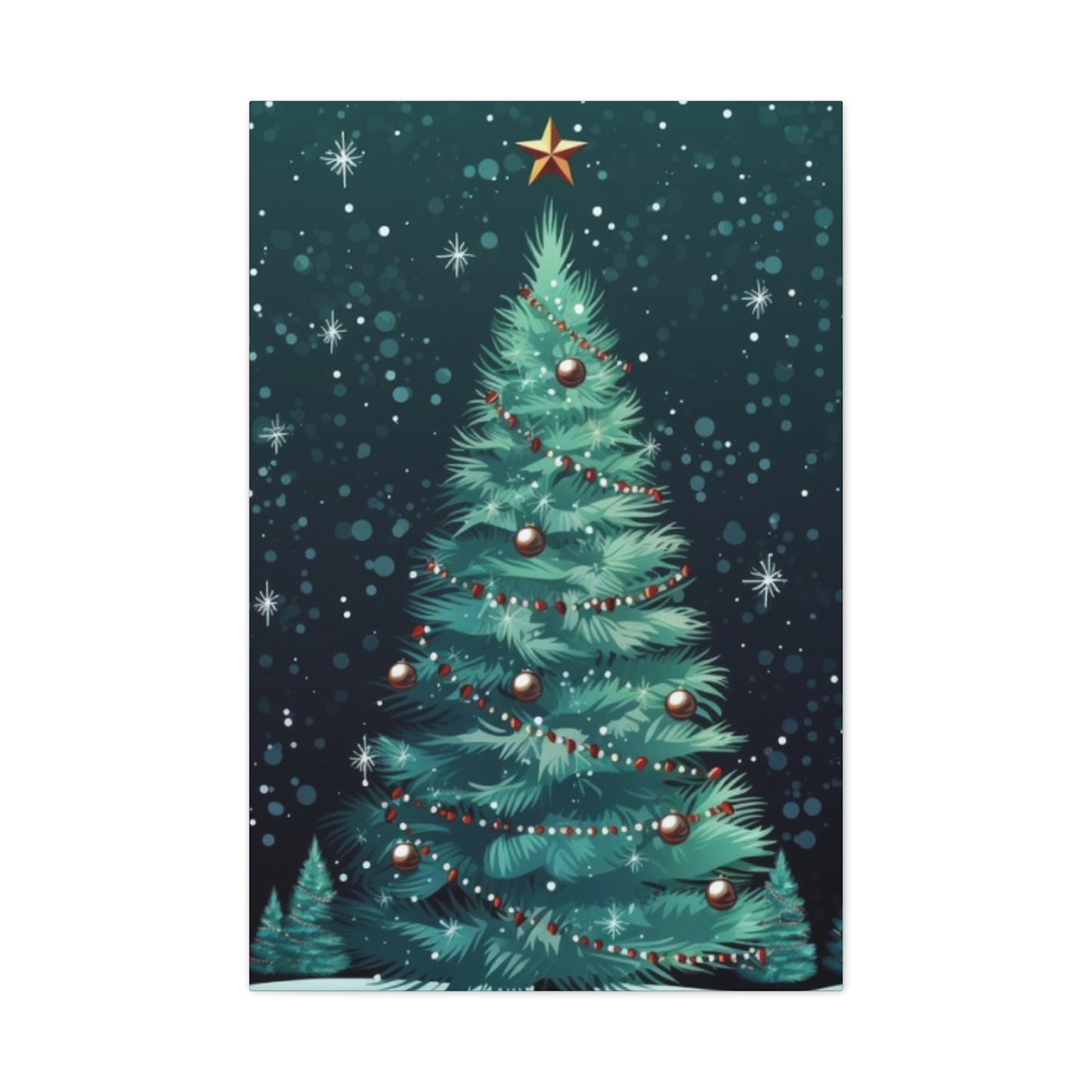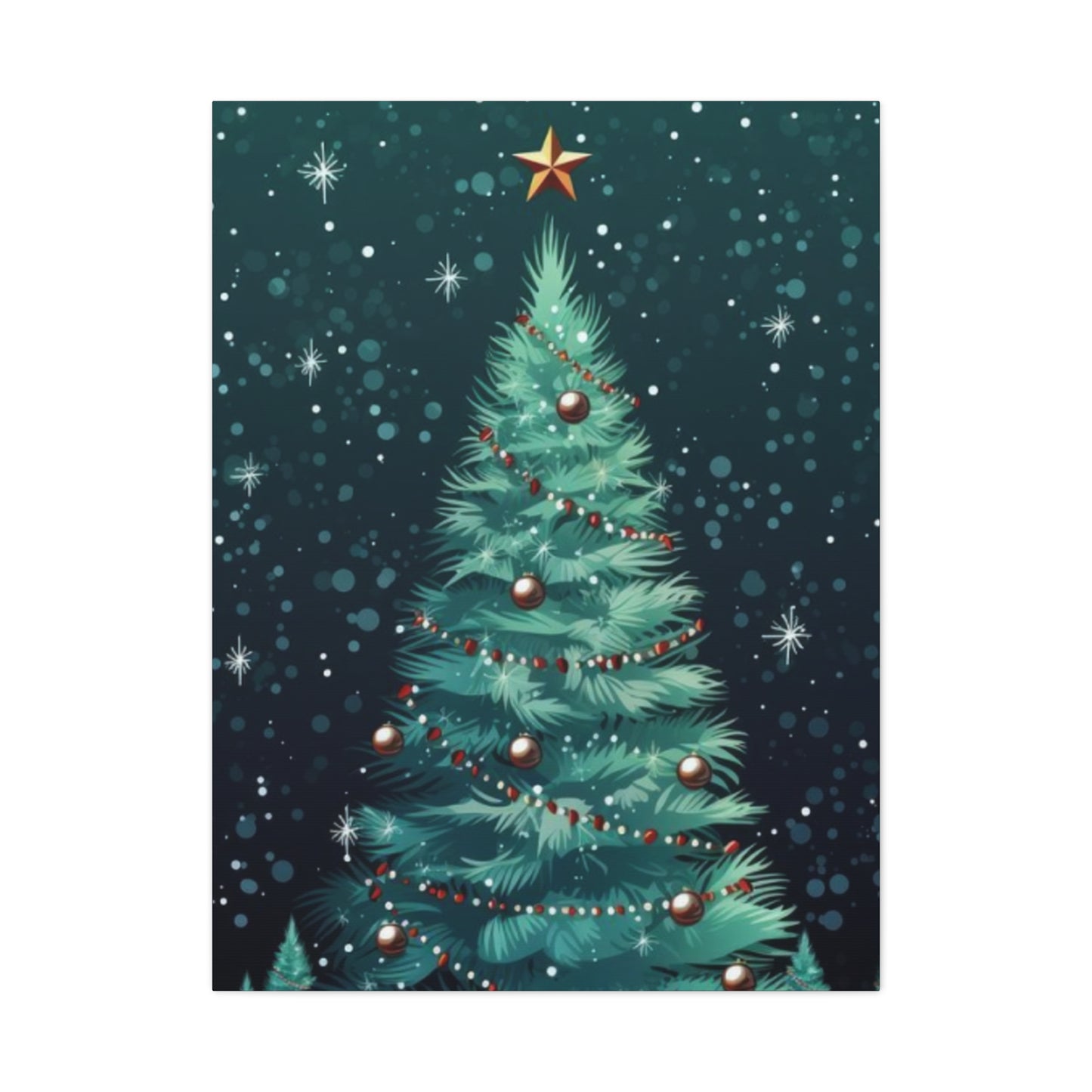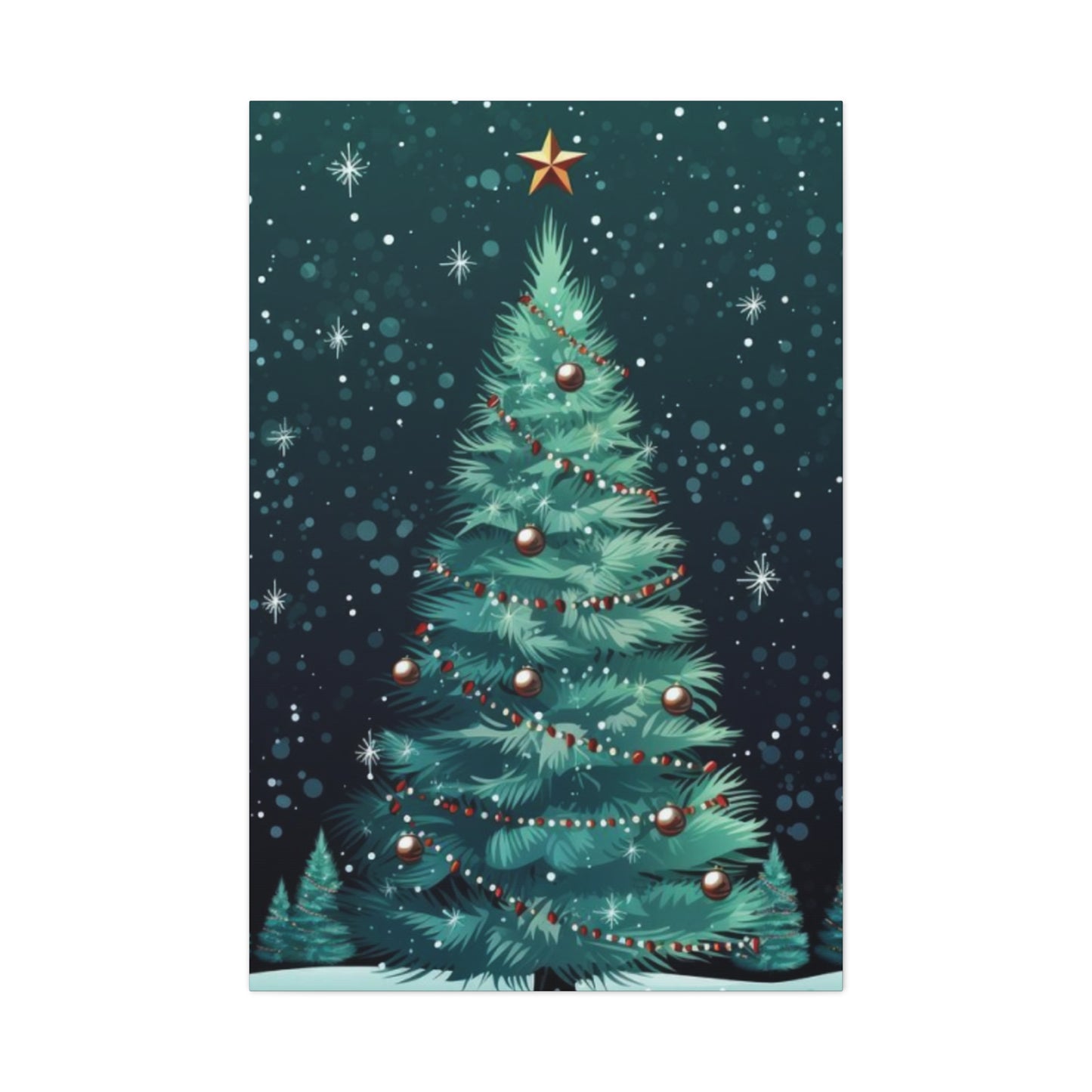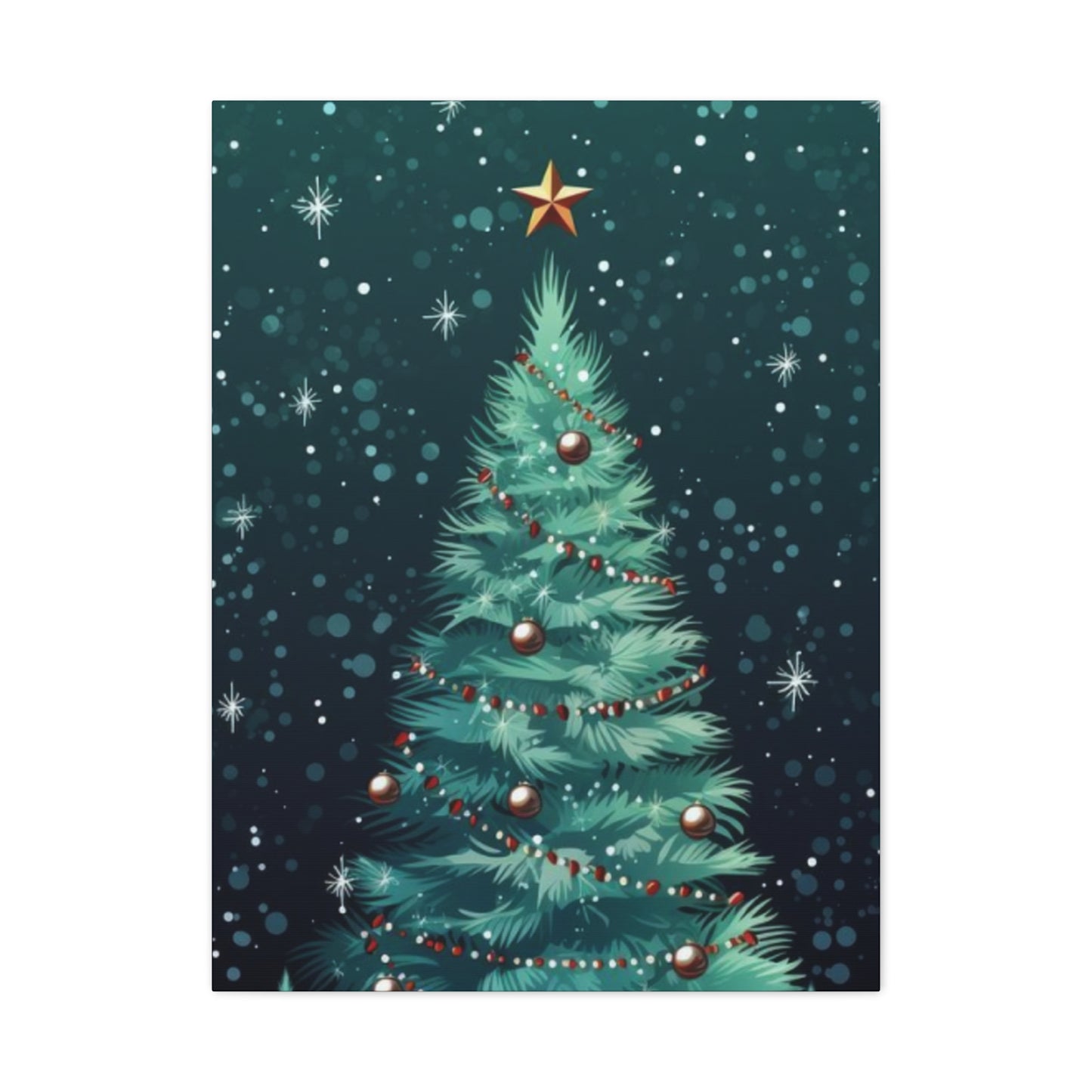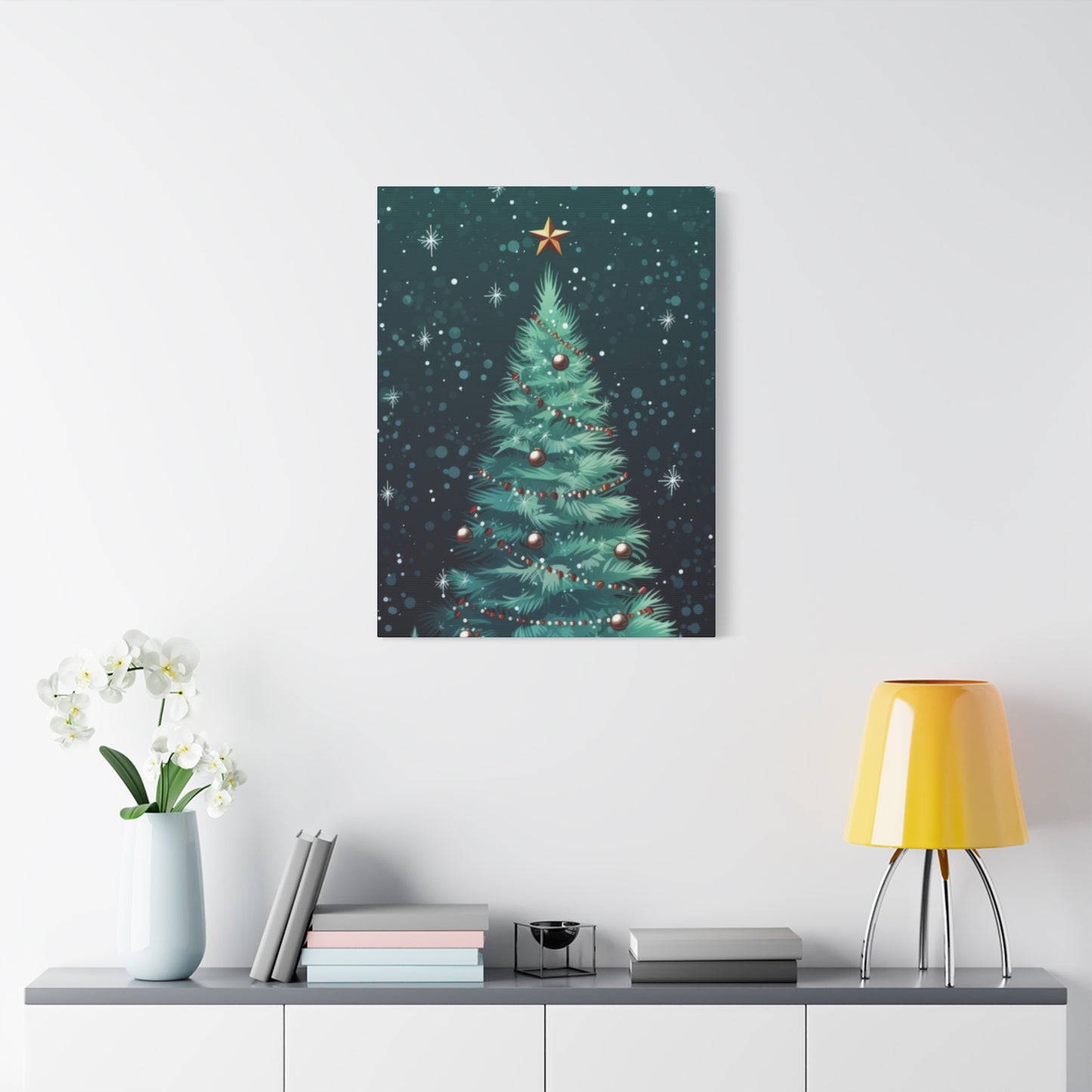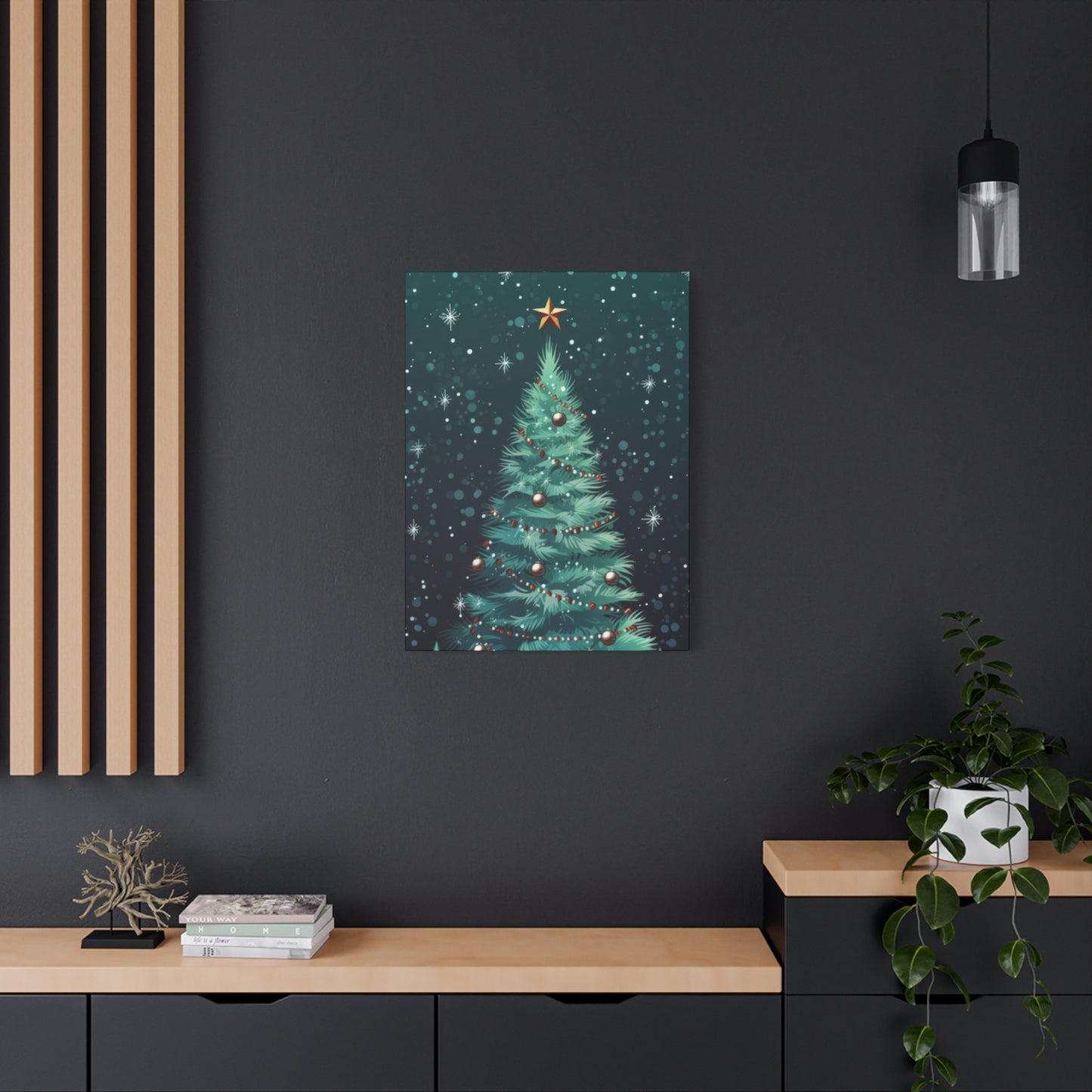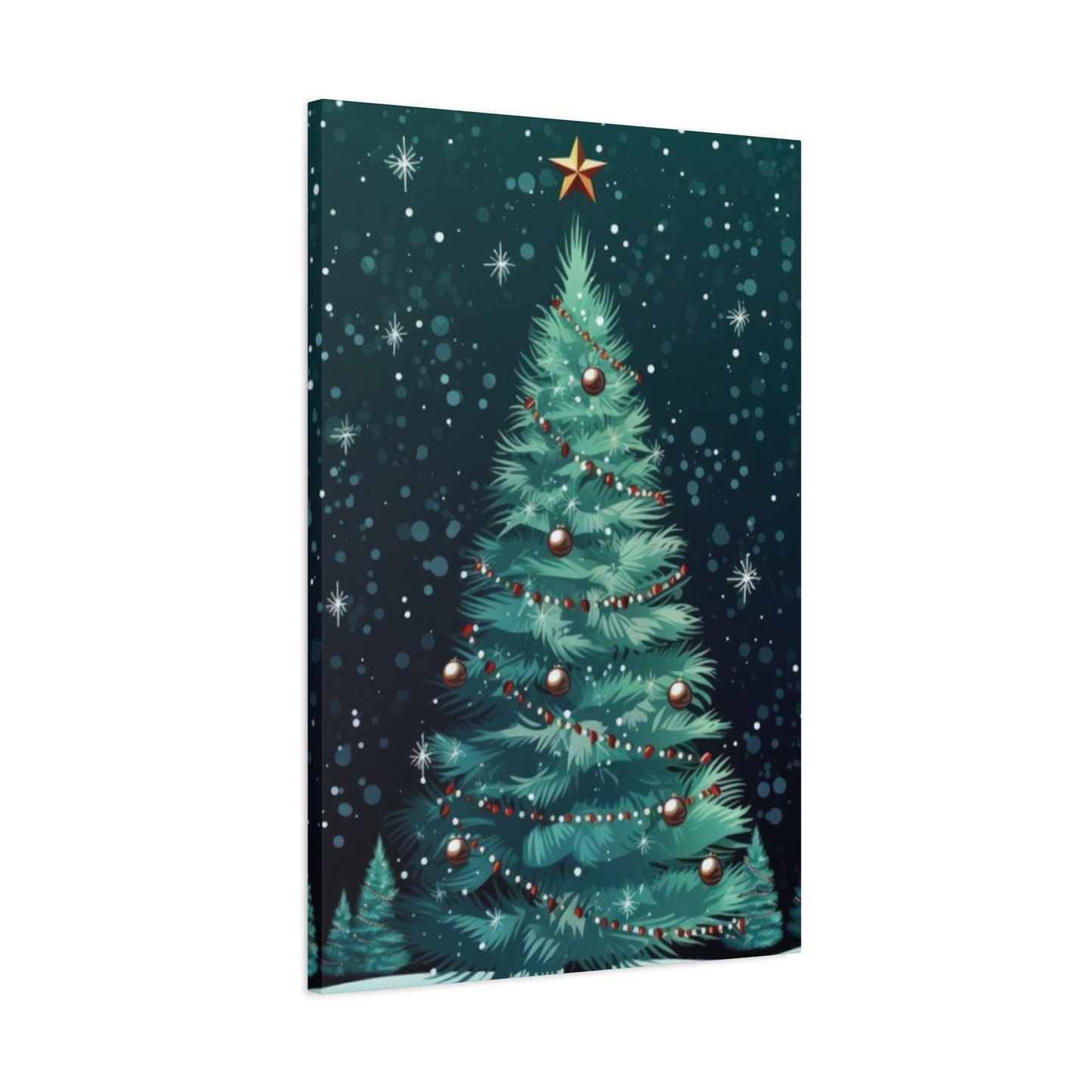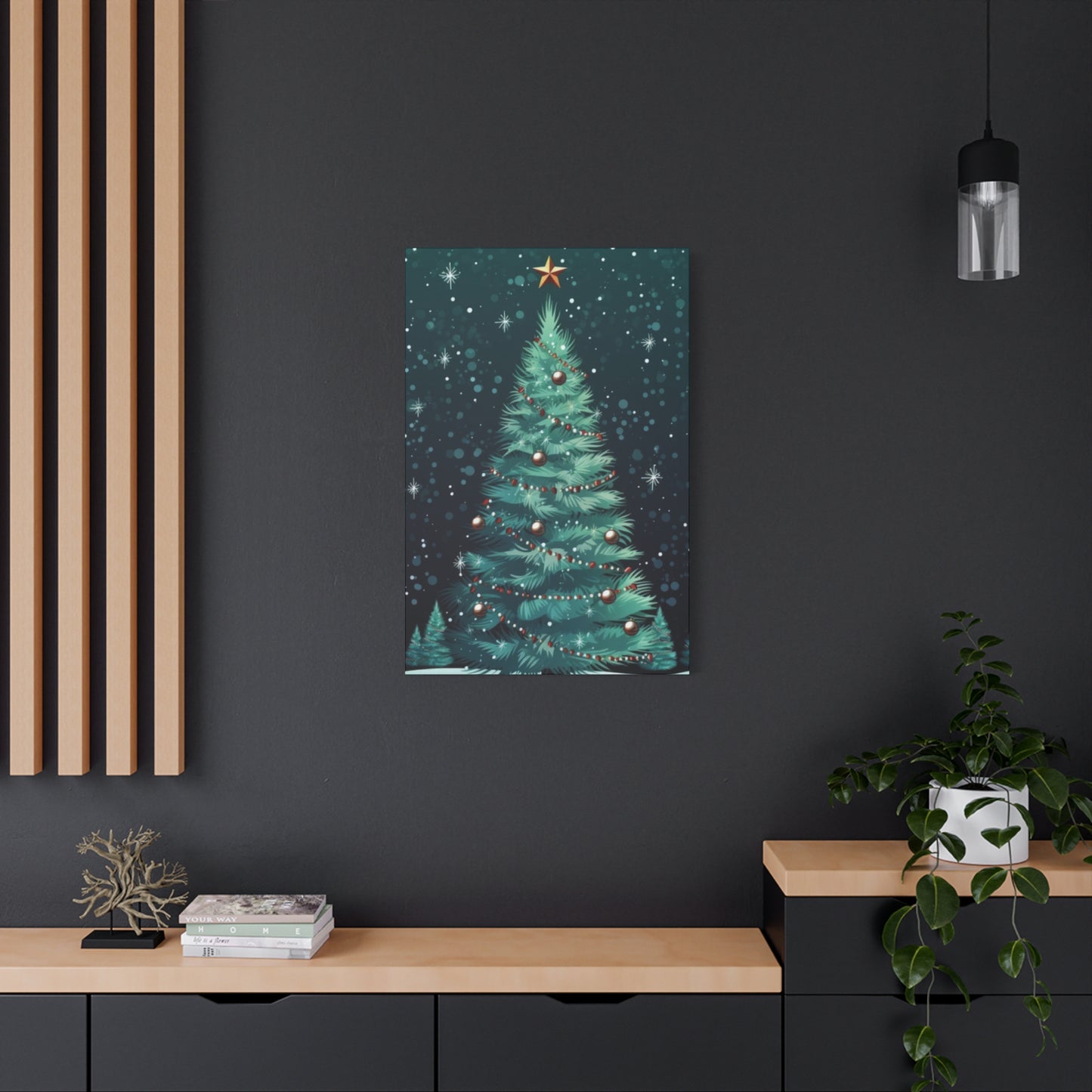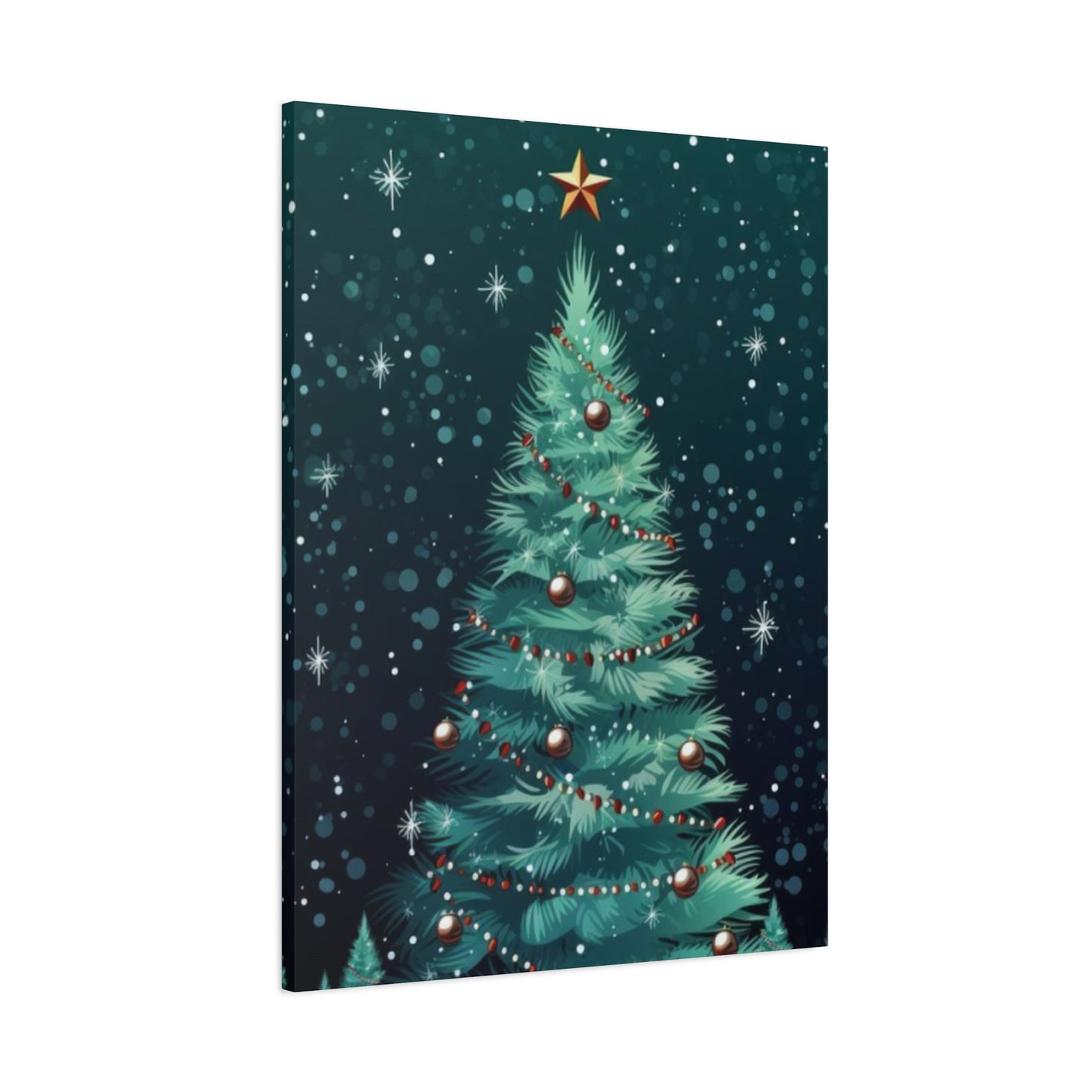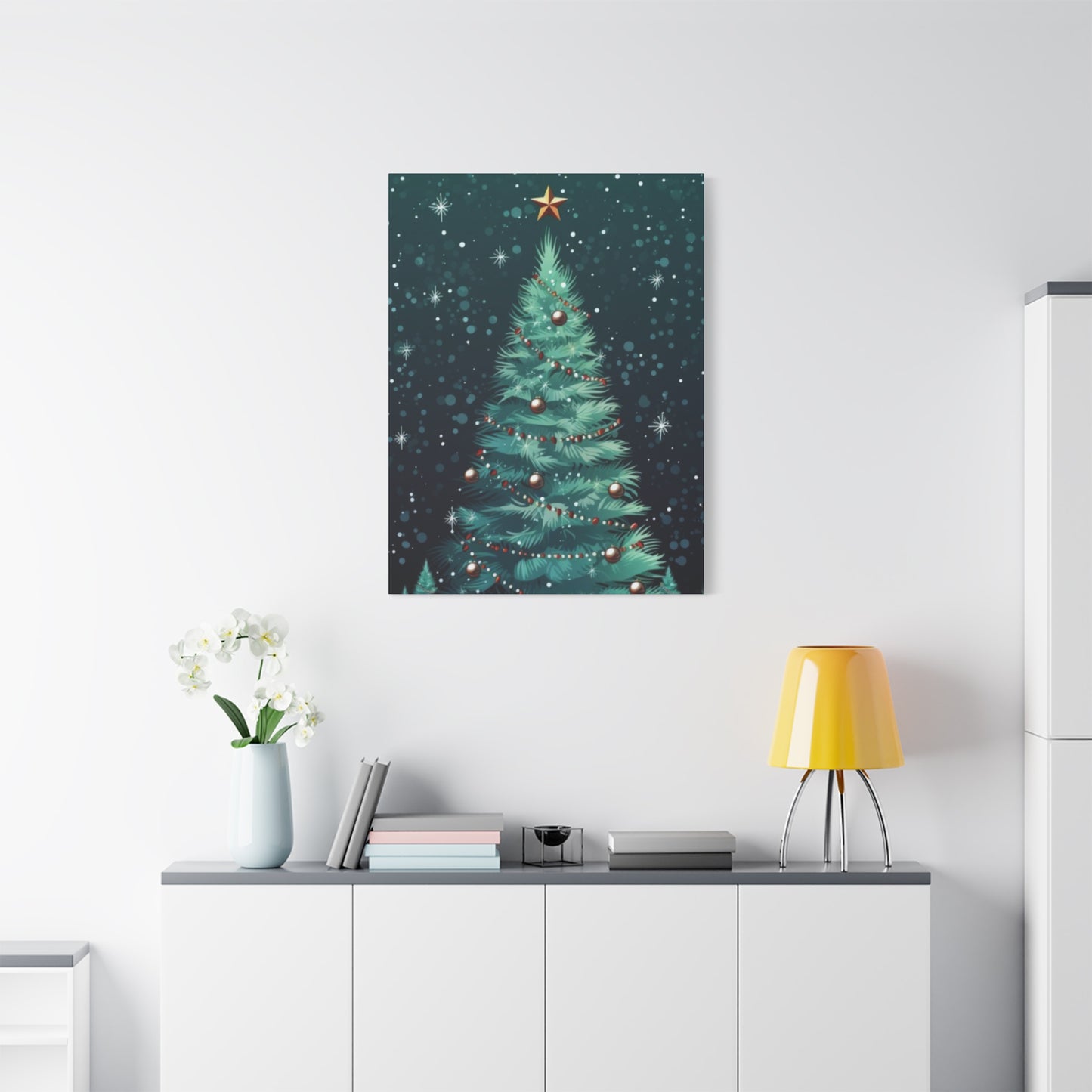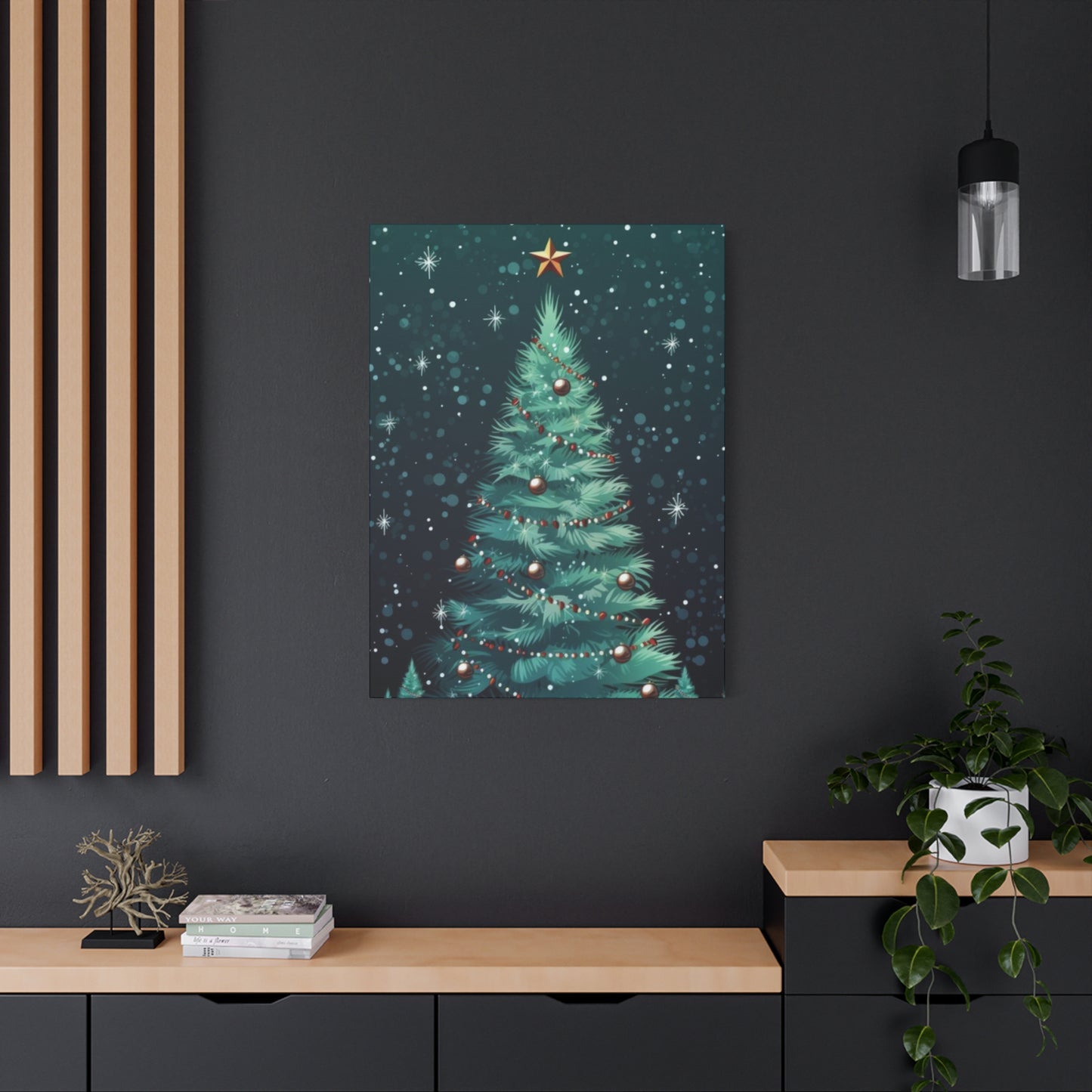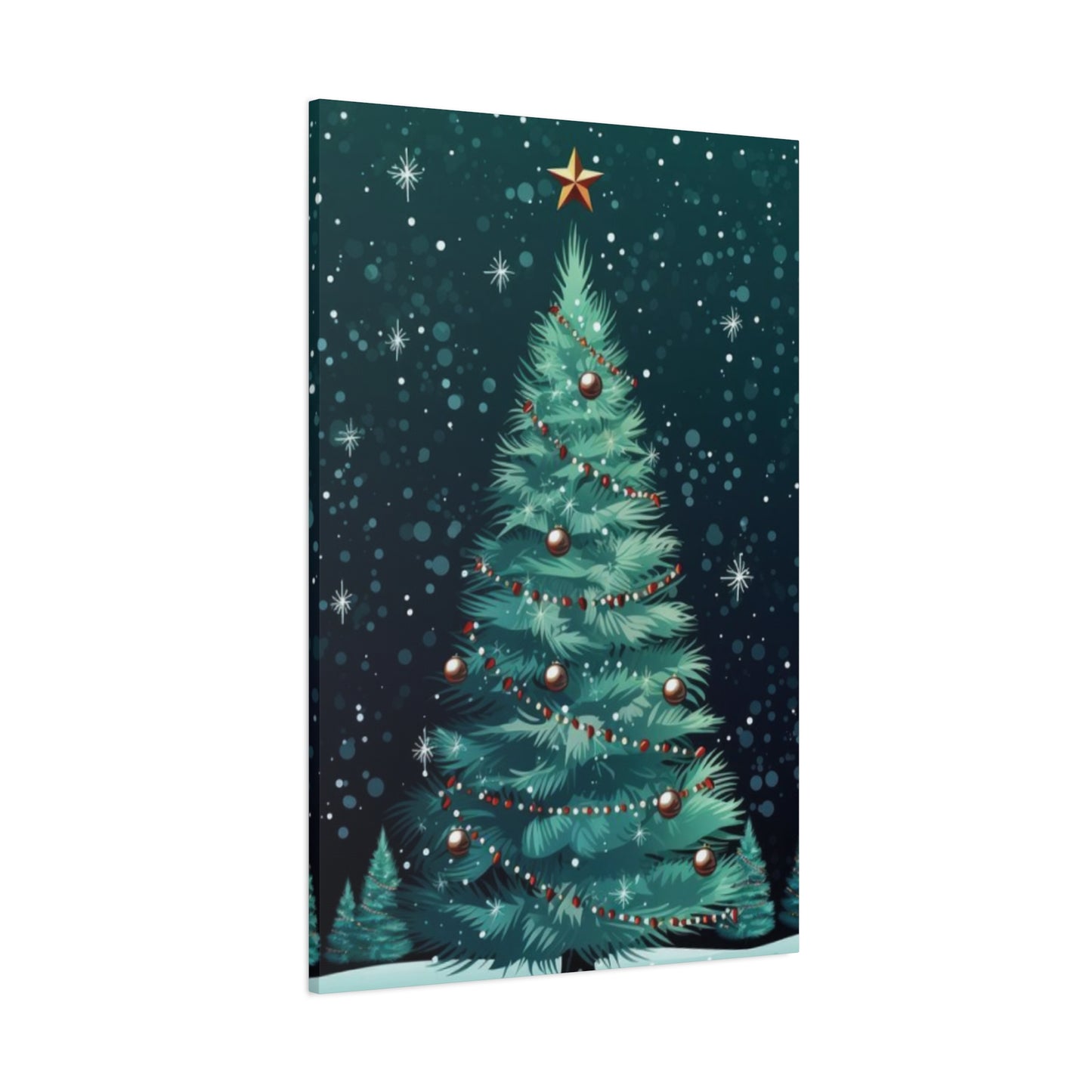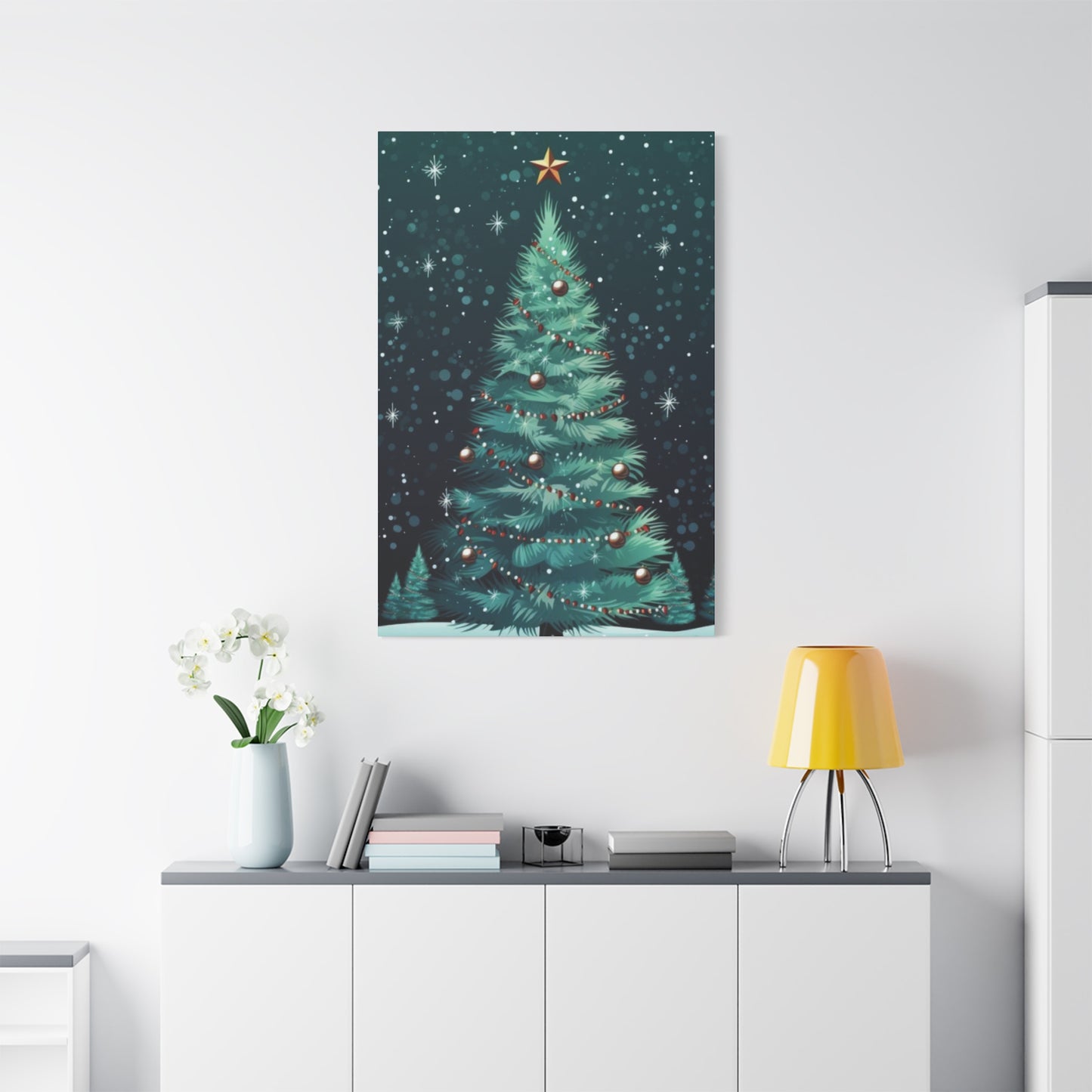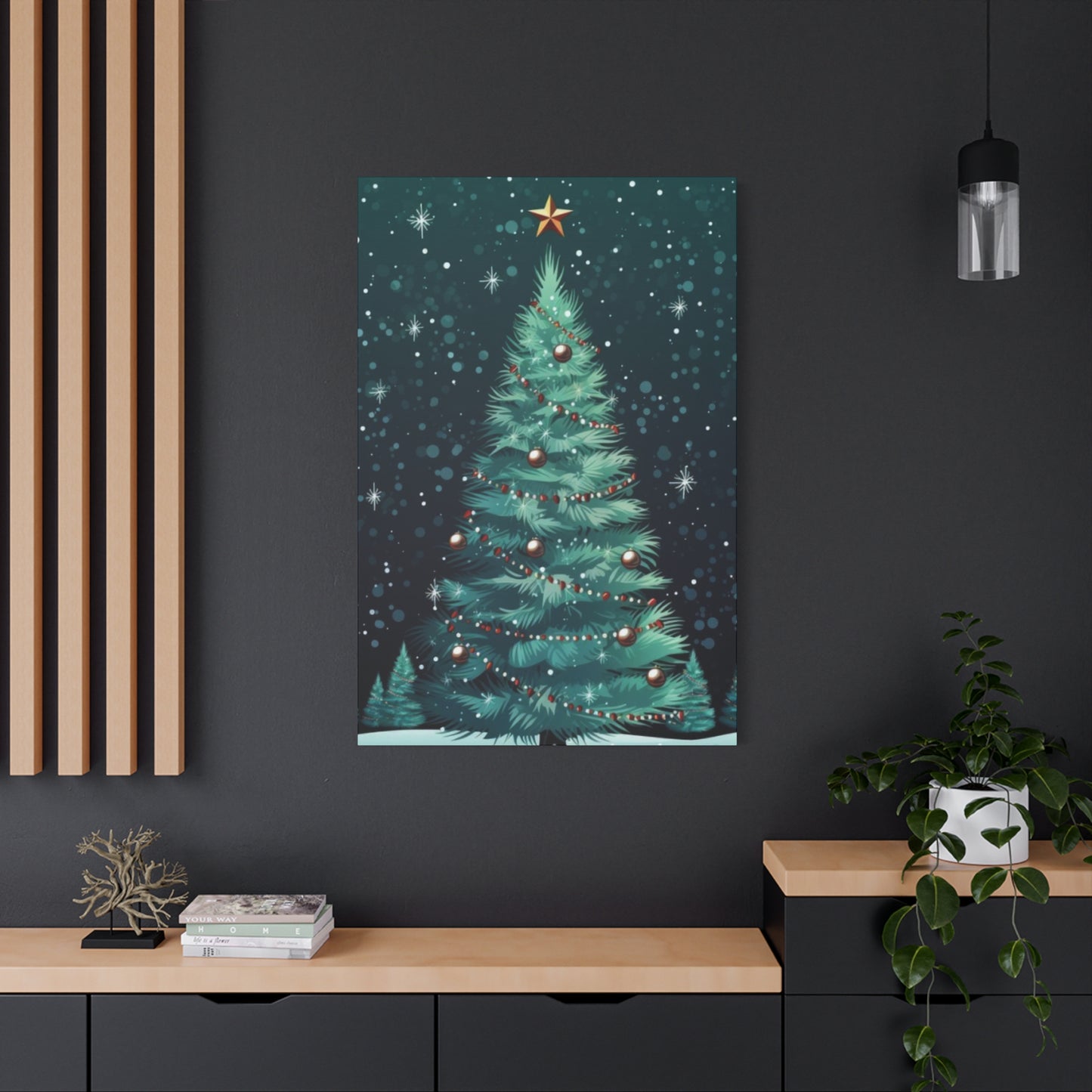Bring the Magic of Christmas Indoors with Beautiful Tree Decoration Wall Art
The holiday season brings with it a magical opportunity to transform your living environment into a winter wonderland. One of the most enchanting ways to celebrate Christmas is through creative wall art featuring festive tree designs that capture the essence of the season without requiring the traditional floor placement of a full-sized evergreen. These innovative approaches to holiday decorating offer flexibility, creativity, and endless possibilities for personal expression while maintaining the cherished symbolism of the Christmas tree.
Wall-mounted Christmas tree decorations have gained tremendous popularity among homeowners who seek unique alternatives to conventional holiday displays. Whether you're working with limited floor area, prefer minimalist aesthetics, or simply want to explore creative expression through seasonal decorating, these artistic tree representations provide perfect solutions for every situation and style preference.
The beauty of Christmas tree wall art lies in its versatility and adaptability to various living situations, decorating preferences, and artistic skill levels. From elaborate three-dimensional installations to simple paper cutouts, these creative projects can be tailored to match any home's existing decor while adding that special festive touch that makes the holiday season truly memorable.
Three-Dimensional Christmas Tree Artwork
Creating stunning three-dimensional Christmas tree wall art involves combining traditional holiday symbolism with contemporary artistic techniques to produce eye-catching displays that serve as focal points in any room. These dimensional pieces add depth and visual interest while maintaining the festive spirit that defines the Christmas season.
The process of constructing three-dimensional tree artwork begins with selecting appropriate materials that will create the desired depth effect. Foam boards, corrugated cardboard, wooden planks, or even repurposed materials can serve as the foundation for these creative projects. The key to success lies in layering different elements at varying distances from the wall, creating shadows and depth that make the artwork come alive.
Layering techniques play a crucial role in achieving the three-dimensional effect that makes these artworks so captivating. By cutting tree shapes in different sizes and mounting them at various distances from the wall using spacers, brackets, or small blocks, you create a cascading effect that mimics the natural layers of evergreen branches. This technique works particularly well when using materials of different colors or textures, as the variation adds visual complexity and interest.
Color gradation enhances the dimensional effect by creating natural-looking depth through the strategic use of different shades of green, ranging from deep forest tones at the back layers to lighter, more vibrant greens at the front. This technique mimics how natural light affects the appearance of real evergreen trees, where inner branches appear darker due to reduced light exposure.
Texture variation contributes significantly to the overall impact of three-dimensional tree artwork. Incorporating materials with different surface textures, such as rough bark-textured papers, smooth metallic finishes, or fabric elements, creates tactile interest that enhances the visual appeal. These textural contrasts help define the different layers and add authenticity to the overall design.
Lighting integration can transform three-dimensional tree artwork into stunning illuminated displays that serve as both decoration and ambient lighting. Small LED strips hidden behind the various layers create beautiful shadowing effects and highlight the dimensional aspects of the artwork. Battery-operated lights offer flexibility in placement without requiring proximity to electrical outlets.
Environmentally Conscious Tree Decorations
Environmental awareness has become increasingly important in holiday decorating, leading to the development of eco-friendly Christmas tree wall art that celebrates the season while demonstrating respect for nature. These sustainable approaches to holiday decorating utilize recycled materials, natural elements, and renewable resources to create beautiful displays that align with environmental values.
Recycled material utilization forms the foundation of eco-friendly Christmas tree wall art projects. Newspapers, magazines, cardboard packaging, plastic bottles, and other household items that would typically be discarded can be transformed into stunning holiday decorations through creative repurposing. This approach not only reduces waste but also demonstrates how creativity can transform ordinary discarded items into extraordinary decorative elements.
Natural material incorporation brings authentic forest elements into your holiday decorating scheme while maintaining environmental consciousness. Fallen branches, pine cones, dried leaves, twigs, bark pieces, and other naturally occurring materials can be arranged into tree shapes that celebrate the genuine beauty of nature. These materials can often be collected during autumn walks, making the decorating process an enjoyable family activity.
Biodegradable options ensure that your holiday decorations won't contribute to long-term environmental waste. Paper-based decorations, natural fiber fabrics, untreated wood elements, and plant-based adhesives create beautiful displays that can be composted or recycled after the holiday season ends. This approach demonstrates how festive decorating can be both beautiful and environmentally responsible.
Sustainable crafting techniques minimize environmental impact throughout the creation process. Using water-based paints, natural dyes, recyclable fasteners, and renewable energy sources for crafting activities reduces the ecological footprint of your holiday decorating projects. These conscious choices demonstrate that environmental responsibility and creative expression can work together harmoniously.
Energy-efficient lighting options complement eco-friendly tree wall art by providing beautiful illumination while minimizing power consumption. Solar-powered LED lights, rechargeable battery systems, and low-voltage lighting options offer environmentally conscious alternatives to traditional holiday lighting while still creating the magical glow that makes Christmas decorations so enchanting.
Local material sourcing reduces transportation-related environmental impacts while supporting community businesses and artisans. Purchasing materials from local craft stores, farmers markets, or natural areas helps minimize the carbon footprint associated with your decorating projects while contributing to the local economy.
Illuminated Tree Wall Displays
The magic of Christmas often centers around the warm, inviting glow of holiday lights, and incorporating illumination into tree wall art creates captivating displays that serve as both decorative elements and functional lighting sources. These illuminated creations transform ordinary wall decorations into stunning focal points that capture the enchanting spirit of the holiday season.
LED technology has revolutionized holiday lighting by providing energy-efficient, long-lasting, and safe options for illuminated wall art projects. These modern lighting solutions generate minimal heat, consume less electricity than traditional incandescent bulbs, and offer extensive color options that can be customized to match any decorating scheme or personal preference.
String light arrangements form the backbone of most illuminated tree wall displays, with various patterns and configurations creating different visual effects. Spiral patterns that start from the bottom and wind upward mimic traditional tree decorating techniques, while zigzag patterns create dynamic movement and energy. Concentric circles or fan-shaped arrangements offer alternative approaches that can be particularly effective for modern or contemporary decorating styles.
Color temperature selection significantly impacts the ambiance created by illuminated tree wall art. Warm white lights provide cozy, traditional Christmas feelings that evoke memories of classic holiday celebrations. Cool white lights offer crisp, modern aesthetics that work well with contemporary decorating schemes. Colored lights, whether single colors or multi-colored combinations, add playful energy and can be coordinated with existing room colors or holiday themes.
Timer integration allows illuminated tree displays to operate automatically, turning on and off at predetermined times without manual intervention. This feature not only adds convenience but also helps manage energy consumption by ensuring lights aren't left on unnecessarily. Many modern timer systems offer programmable schedules that can be customized throughout the holiday season.
Battery-powered solutions provide flexibility in placement by eliminating the need for proximity to electrical outlets. Modern rechargeable battery systems can power LED light displays for extended periods, making it possible to create illuminated tree wall art in any location, including rooms without convenient electrical access or outdoor applications.
Dimming capabilities add versatility to illuminated tree displays by allowing brightness adjustments to suit different occasions, times of day, or personal preferences. Gradual dimming can create romantic evening ambiance, while brighter settings work well for holiday parties or family gatherings. Some systems offer color-changing capabilities that can create dynamic, ever-changing displays.
Traditional Rustic Tree Presentations
Rustic Christmas tree wall art celebrates the authentic, natural beauty of traditional holiday celebrations while incorporating design elements that evoke cozy cabin aesthetics and countryside charm. These displays emphasize natural materials, earthy colors, and handcrafted textures that create warm, inviting atmospheres reminiscent of old-fashioned Christmas celebrations.
Reclaimed wood serves as an ideal foundation for rustic tree wall art, with weathered barn wood, driftwood, or salvaged fence planks providing authentic textures and natural character that can't be replicated with new materials. The natural aging process creates unique grain patterns, color variations, and surface textures that add depth and interest to the finished artwork.
Natural color palettes define rustic tree decorations, with earthy browns, forest greens, warm reds, and cream tones creating harmonious combinations that feel organic and authentic. These colors work together to create cohesive displays that complement natural wood elements and other rustic decorating themes throughout the home.
Handcrafted elements add personal touches and authentic charm to rustic tree wall art. Hand-carved details, rough-hewn edges, deliberately imperfect finishes, and visible tool marks contribute to the handmade aesthetic that defines rustic decorating styles. These imperfections are actually desirable features that demonstrate the human touch and craftsmanship involved in creating the artwork.
Texture layering creates visual depth and tactile interest in rustic tree displays. Combining smooth and rough surfaces, incorporating fabric elements like burlap or flannel, adding metal accents such as wrought iron or galvanized steel, and including natural elements like pine cones or twigs creates complex, engaging displays that invite closer examination.
Traditional fastening methods align with rustic aesthetics by using rope, twine, leather strips, or metal wire instead of modern adhesives or hidden mounting systems. These visible fastening elements become part of the overall design, adding to the handcrafted appearance while providing secure mounting solutions.
Distressing techniques can transform new materials to achieve authentic rustic appearances. Sanding, staining, painting followed by strategic sanding to reveal underlying layers, and deliberate aging processes help new materials blend seamlessly with genuinely weathered elements. These techniques require patience and practice but produce convincing results.
Contemporary Tree Artwork Concepts
Modern Christmas tree wall art embraces contemporary design principles while maintaining holiday symbolism, creating sophisticated displays that appeal to homeowners with contemporary, minimalist, or avant-garde decorating preferences. These artistic interpretations push traditional boundaries while preserving the essential Christmas tree concept.
Geometric interpretations transform traditional tree shapes into angular, mathematical forms that appeal to modern sensibilities. Triangular compositions using straight lines, hexagonal patterns, or abstract polygonal arrangements maintain tree recognition while introducing contemporary visual elements. These geometric approaches work particularly well in homes with modern architecture or contemporary furnishings.
Minimalist aesthetics focus on essential elements while eliminating unnecessary details, creating clean, uncluttered displays that make powerful statements through simplicity. Single-color schemes, simple shapes, negative shapes, and strategic positioning create sophisticated artwork that doesn't compete with other room elements while still providing festive holiday recognition.
Abstract representations move beyond literal tree depictions to suggest Christmas tree concepts through color, form, and composition rather than realistic imagery. Flowing lines, color gradients, asymmetrical arrangements, and non-traditional materials can evoke Christmas tree feelings without depicting actual tree forms. These approaches appeal to art enthusiasts and contemporary design lovers.
Industrial materials such as metal, concrete, glass, or modern plastics provide contemporary alternatives to traditional natural materials. Brushed steel, oxidized copper, frosted glass panels, or sleek acrylic elements create sophisticated displays that complement modern architectural elements and contemporary furniture pieces.
Monochromatic schemes using single colors in various shades and textures create sophisticated, cohesive displays that integrate seamlessly with contemporary room designs. All-white installations, various shades of gray, or single bold colors like deep blue or burgundy can create striking focal points without overwhelming existing decorating schemes.
Technology integration allows contemporary tree wall art to incorporate modern conveniences like smartphone controls, programmable lighting sequences, sound integration, or interactive elements. These high-tech features appeal to technology enthusiasts while providing functional benefits and entertainment value.
Soft Fabric Tree Creations
Felt Christmas tree wall art offers a delightful combination of warmth, texture, and handcrafted charm that appeals to families with young children while providing sophisticated design options for adult decorating preferences. The soft, tactile nature of felt materials creates inviting displays that encourage interaction while maintaining beautiful visual appeal.
Material selection plays a crucial role in felt tree projects, with various felt types offering different characteristics and possibilities. Wool felt provides premium quality with excellent durability and natural fire resistance, while synthetic felt offers budget-friendly options with consistent colors and easy care requirements. Eco-felt made from recycled materials provides environmentally conscious alternatives.
Color coordination in felt tree projects allows for sophisticated or playful approaches depending on personal preferences and room requirements. Traditional Christmas colors like red and green create familiar, comfortable displays, while non-traditional color combinations such as pastels, metallics, or monochromatic schemes offer contemporary alternatives that can complement any decorating style.
Layering techniques add dimension and visual interest to felt tree wall art. Multiple felt pieces in different sizes and colors can be layered to create depth effects, shadow patterns, and textural variety. These layering approaches work particularly well when combining different felt thicknesses or incorporating other materials alongside felt elements.
Embellishment options for felt trees include embroidery, applique, beading, sequin application, button attachment, or ribbon integration. These decorative elements add sparkle, texture, and personal touches while maintaining the soft, touchable quality that makes felt so appealing for family-friendly decorating projects.
Interactive elements make felt tree wall art particularly appealing for households with children. Removable ornaments, pockets for holiday cards or treats, Velcro attachments for changeable decorations, or zippers that reveal hidden surprises transform static wall art into engaging activities that can entertain children throughout the holiday season.
Care and maintenance of felt tree wall art requires attention to the specific requirements of felt materials. Regular gentle brushing removes dust and maintains texture, while spot cleaning handles minor stains. Proper storage between holiday seasons ensures longevity and maintains appearance for years of enjoyment.
Paper-Based Tree Crafts
Paper Christmas tree wall art represents one of the most accessible and versatile approaches to holiday decorating, offering endless possibilities for creativity while remaining budget-friendly and suitable for crafters of all skill levels. The wide variety of paper types, colors, and textures available makes it possible to create everything from simple children's projects to sophisticated artistic installations.
Paper selection significantly impacts the final appearance and durability of tree wall art projects. Cardstock provides sturdy foundations for structural elements, while tissue paper creates delicate, translucent effects. Specialty papers like metallic, textured, or patterned varieties add visual interest and sophistication to finished projects.
Cutting techniques determine the precision and style of paper tree elements. Clean, straight cuts create modern, geometric appearances, while deliberately rough or torn edges produce more organic, natural looks. Precision cutting tools like craft knives create intricate details, while decorative scissors add interesting edge treatments.
Folding methods add dimension to flat paper materials, transforming two-dimensional sheets into three-dimensional sculptural elements. Origami techniques, accordion folds, spiral formations, and fan pleating create texture and depth while maintaining the lightweight characteristics that make paper ideal for wall mounting.
Layering strategies create depth and visual complexity in paper tree wall art. Multiple paper layers in varying sizes, colors, or patterns build up rich, detailed displays that catch light differently at various angles. These layering effects can simulate the natural depth found in real evergreen trees.
Adhesive choices affect both the appearance and longevity of paper tree projects. Double-sided tape provides clean, hidden attachment points, while decorative adhesive elements like washi tape or colored glue dots become part of the overall design. Removable adhesives allow for temporary installations that won't damage wall surfaces.
Preservation techniques help paper tree wall art maintain appearance throughout the holiday season and for future use. Protective sprays, proper mounting methods, and careful storage between seasons ensure these delicate creations remain beautiful for years of holiday enjoyment.
Child-Friendly Tree Projects
Creating Christmas tree wall art with children provides wonderful opportunities for family bonding while developing creativity, fine motor skills, and holiday traditions that can be cherished for years to come. These projects should prioritize safety, simplicity, and fun while producing results that children can feel proud of contributing to the family's holiday decorations.
Age-appropriate activities ensure that children of different developmental stages can participate meaningfully in tree wall art creation. Toddlers might contribute through finger painting, sticker placement, or simple tearing and gluing activities, while older children can handle cutting, detailed coloring, or more complex assembly tasks.
Safety considerations are paramount when involving children in craft projects. Child-safe scissors, non-toxic materials, washable supplies, and adequate supervision prevent injuries while allowing children to develop independence and confidence in their creative abilities. Choosing materials that won't cause harm if accidentally ingested is particularly important for projects involving young children.
Skill development opportunities make these projects educational as well as entertaining. Measuring, cutting, color matching, pattern recognition, following instructions, and problem-solving all contribute to children's cognitive development while creating beautiful holiday decorations together as a family.
Mess management strategies help parents maintain sanity while allowing children creative freedom. Protective coverings for work surfaces, washable clothing or aprons, easily cleaned materials, and designated craft areas contain inevitable messes while preserving the fun and spontaneity that make children's art projects so delightful.
Personal expression encouragement helps children develop confidence and creativity. Allowing children to make their own color choices, design decisions, and creative interpretations teaches them that there are no wrong ways to be creative while building self-esteem and artistic confidence.
Memory creation aspects of family craft projects extend far beyond the finished decorations themselves. Taking photos during the creation process, dating and saving children's artwork, creating annual traditions around specific projects, and displaying children's contributions prominently help build lasting family memories and holiday traditions.
Ornamental Tree Displays
Christmas tree wall art adorned with ornaments combines the traditional charm of decorated trees with the innovative approach of wall-mounted displays, creating stunning focal points that capture all the magic of traditionally decorated trees while offering unique advantages in terms of placement flexibility and creative expression.
Ornament selection requires consideration of weight, size, and attachment methods when creating wall-mounted displays. Lightweight ornaments work best for wall applications, with plastic, fabric, paper, or hollow glass options providing beautiful appearance without creating excessive weight that could compromise mounting stability.
Attachment methods must securely hold ornaments while maintaining the artistic integrity of the wall display. Small hooks, adhesive hangers, magnetic systems, or integrated mounting points built into the tree structure provide secure ornament placement while allowing for seasonal changes and personal customization throughout the holidays.
Spacing considerations ensure ornaments enhance rather than overwhelm the tree wall art design. Balanced distribution, varied sizes, color coordination, and visual flow create pleasing compositions that showcase both the tree structure and individual ornaments effectively. Too many ornaments can create cluttered appearances, while too few might seem sparse.
Theme coordination allows ornament selection to complement overall decorating schemes or reflect family interests and traditions. Color-coordinated themes, style-specific selections, handmade ornaments, family heirlooms, or collection displays can personalize tree wall art while creating cohesive, intentional appearances.
Seasonal rotation capabilities allow ornament displays to evolve throughout the holiday season, maintaining interest and providing opportunities to showcase different collections or themes. Easy-change systems encourage frequent updates while maintaining secure attachment for safety and stability.
Storage solutions for ornaments used in wall tree displays require consideration of their specific shapes, sizes, and fragility levels. Proper storage ensures ornaments remain in good condition between seasons while making next year's decorating process smooth and enjoyable.
String Artwork Tree Designs
String art Christmas tree wall displays combine traditional needlework techniques with contemporary artistic expression, creating unique textural installations that add handcrafted charm and visual interest to holiday decorating schemes. These projects offer satisfying creative challenges while producing stunning results that showcase the beauty of simple materials transformed through patient craftsmanship.
Foundation preparation establishes the structural base for string art projects. Wooden boards, cork panels, foam core, or stretched canvas provide stable surfaces for nail or pin placement. The foundation size determines the scale of the finished project, with larger foundations allowing for more complex designs and greater visual impact.
Pattern creation involves translating tree designs into nail placement guides that will support string arrangements. Graph paper templates, printed patterns, or original designs help ensure accurate nail positioning while maintaining design proportions. Pattern complexity can range from simple outline shapes to intricate detailed representations.
Nail placement accuracy determines the precision and appearance of the finished string art. Consistent spacing, appropriate depth, and strategic positioning create foundations that will support string tension while maintaining design integrity. Pre-drilling pilot holes can prevent wood splitting while ensuring accurate nail placement.
String selection affects both appearance and durability of finished projects. Cotton embroidery floss offers wide color selections and easy handling, while metallic threads add sparkle and elegance. Yarn provides different textures and visual weight, while specialty threads like silk or linen create unique appearances.
Tension management ensures string art maintains its appearance over time while preventing sagging or loosening. Consistent tension throughout the stringing process, proper knot placement, and periodic tightening maintain crisp, defined lines that showcase the geometric beauty of string art techniques.
Color pattern planning allows string art tree projects to incorporate multiple colors effectively. Gradual color transitions, contrasting accent colors, or monochromatic variations create different visual effects while maintaining design cohesion and artistic appeal.
Compact Area Tree Solutions
Small living areas require creative approaches to Christmas tree displays that maximize festive impact while minimizing required floor or wall area. These compact solutions prove that limited dimensions don't have to limit holiday decorating possibilities or reduce the magic and joy of Christmas celebrations.
Vertical design maximization takes advantage of wall height rather than width or depth to create impressive tree displays in narrow areas. Tall, narrow tree configurations, vertical element arrangements, and upward-focused lighting draw the eye upward while creating the impression of larger dimensions than actually exist.
Multi-functional approaches combine tree wall art with practical functions like lighting, storage, or room division. Tree-shaped shelving, illuminated room dividers, or decorative screens that incorporate tree designs serve multiple purposes while adding festive touches to small living areas.
Modular systems allow tree wall art to be adjusted seasonally or as needs change. Removable sections, adjustable components, or expandable designs provide flexibility while maintaining cohesive appearances. These systems work particularly well for renters or people who frequently rearrange their living areas.
Corner utilization makes efficient use of often-overlooked areas that might otherwise remain decoratively unused. Corner-mounted tree displays, angular designs that fit naturally into corner configurations, or wraparound installations maximize impact while minimizing intrusion into valuable floor areas.
Ceiling integration creates dramatic effects while preserving floor and wall area for other uses. Suspended elements, hanging installations, or ceiling-mounted tree displays draw attention upward while creating unique perspectives that can make small rooms feel larger and more open.
Optical illusion techniques can make tree wall art appear larger or more substantial than actual physical dimensions. Strategic lighting, mirror integration, color gradation, or perspective tricks create impressive visual effects that enhance the perceived size and impact of compact tree displays.
Recycled Material Tree Art
Environmental consciousness and creative expression combine beautifully in Christmas tree wall art projects that transform discarded materials into stunning holiday decorations. These projects demonstrate how creativity can give new life to items that might otherwise contribute to waste while creating unique, personally meaningful decorations.
Material collection becomes an ongoing treasure hunt as crafters develop eyes for seeing potential in discarded items. Newspapers, magazines, cardboard packaging, plastic containers, fabric scraps, bottle caps, and countless other household discards can become raw materials for creative tree projects that cost virtually nothing while producing impressive results.
Preparation techniques transform raw recycled materials into workable crafting supplies. Cleaning, sorting, cutting, and organizing collected materials creates manageable supplies while ensuring finished projects meet hygiene and aesthetic standards. This preparation phase often reveals creative possibilities that weren't immediately obvious.
Design adaptation requires flexibility as available materials influence final project appearance. Working with recycled materials means designs must often be adjusted to accommodate what's available rather than what might be ideal. This constraint actually encourages greater creativity and more innovative solutions.
Structural considerations ensure recycled material projects maintain stability and appearance over time. Reinforcement techniques, appropriate adhesives, and realistic expectations about material limitations help create durable displays that will last throughout the holiday season and potentially beyond.
Aesthetic enhancement helps recycled materials transcend their original appearances to become beautiful decorative elements. Paint, fabric covering, strategic arrangement, and creative combination with other materials can transform humble beginnings into sophisticated finished projects that rival store-bought decorations.
Educational value in recycled material projects extends beyond crafting skills to include environmental awareness, resource conservation, and creative problem-solving. These projects teach valuable lessons about waste reduction while demonstrating how individual actions can make positive environmental differences.
Photography-Based Tree Displays
Photo Christmas tree wall art creates personalized displays that combine family memories with holiday decorating, resulting in meaningful installations that tell stories while celebrating the season. These projects transform favorite photographs into festive decorations that become more treasured over time as memories accumulate and family histories develop.
Photo selection requires consideration of image quality, color coordination, and emotional significance when creating tree displays. High-resolution images reproduce better in various sizes, while color coordination ensures photos work well together visually. Emotional significance creates personal connections that make displays more meaningful than generic decorations.
Arrangement strategies determine how photos combine to create cohesive tree shapes and visually appealing displays. Size variation, color balance, chronological organization, or thematic groupings create different effects while maintaining recognizable tree configurations that serve the decorative purpose effectively.
Printing considerations include paper types, sizes, and finishing options that affect both appearance and durability. Photo papers, canvas prints, or specialty materials each offer different characteristics and visual effects. Proper printing ensures images reproduce accurately while maintaining archival quality for long-term enjoyment.
Mounting solutions must protect photographs while providing secure attachment to wall surfaces. Acid-free materials prevent photo deterioration, while removable mounting systems allow for seasonal changes without permanent alterations to precious family images.
Theme development creates cohesive displays that tell stories or celebrate specific aspects of family life. Yearly themes, generational displays, activity-focused collections, or milestone celebrations provide organizational frameworks that enhance both visual appeal and emotional impact.
Preservation methods ensure photo tree displays remain beautiful while protecting valuable family images from damage. UV protection, moisture control, and proper storage between seasons maintain image quality while allowing these cherished displays to become lasting family traditions.
Textile-Based Tree Creations
Fabric Christmas tree wall art combines textile traditions with holiday decorating to create warm, touchable displays that add softness and comfort to festive decorating schemes. These projects celebrate the handmade aesthetic while offering endless possibilities for personal expression through fabric selection, pattern combinations, and construction techniques.
Fabric selection influences every aspect of textile tree projects from appearance to durability to construction requirements. Cotton fabrics offer easy handling and wide color selections, while specialty fabrics like silk, velvet, or metallic materials create more luxurious appearances. Texture variety adds visual and tactile interest to finished projects.
Pattern coordination creates cohesive appearances when using multiple fabrics in single projects. Complementary patterns, coordinated color schemes, or strategic use of solids alongside prints help complex fabric combinations work together harmoniously while maintaining visual interest and sophisticated appearances.
Construction techniques determine the structural integrity and appearance of fabric tree wall art. Traditional sewing methods provide durability and professional finishes, while fusible web applications offer quicker alternatives. Hand-stitching adds personal touches and visible craftsmanship that enhance the handmade aesthetic.
Embellishment possibilities for fabric trees include embroidery, applique, beading, button application, ribbon trim, or fabric paint techniques. These decorative additions personalize projects while adding texture, color, and visual interest that transform simple fabric shapes into sophisticated artistic statements.
Dimensional effects in fabric tree projects can be achieved through quilting techniques, stuffing, layering, or strategic gathering that creates depth and shadow effects. These techniques transform flat fabric applications into sculptural installations that catch light and create visual movement.
Maintenance requirements for fabric tree displays include dust removal, stain prevention, and proper seasonal storage. Understanding fabric care requirements ensures these lovingly created displays maintain their beauty throughout their useful lives while preserving the time and effort invested in their creation.
Natural Element Tree Art
Christmas tree wall art incorporating natural elements celebrates the authentic connection between holiday traditions and the natural world, creating displays that feel organic, sustainable, and deeply rooted in the seasonal rhythms that define winter celebrations. These projects honor nature while bringing its beauty indoors.
Foraging expeditions provide opportunities to collect natural materials while enjoying outdoor activities and connecting with nature. Pine cones, interesting branches, colorful leaves, bark pieces, seeds, and other natural treasures can be gathered during family walks while teaching children about natural science and environmental observation.
Material preparation ensures natural elements remain beautiful and stable throughout the holiday season. Cleaning, drying, and sometimes treating natural materials prevents decay, insect problems, or other issues that could compromise display quality or household hygiene. This preparation phase requires patience but ensures lasting beauty.
Preservation techniques help natural materials maintain their appearance and integrity throughout extended display periods. Natural sealers, careful drying processes, and proper storage maintain color, texture, and structural stability while preventing deterioration that could affect display quality.
Arrangement principles guide the organization of natural elements into recognizable tree forms while maintaining organic, natural appearances. Asymmetrical compositions, varied textures, and flowing lines create displays that feel authentically natural rather than artificially constructed.
Seasonal integration allows natural element tree displays to evolve throughout the winter season as different materials become available or as existing elements change with age and environmental exposure. This evolution becomes part of the display's charm and authenticity.
Safety considerations ensure natural material displays remain safe for households with children or pets. Identifying potentially harmful plants, removing sharp edges, and ensuring materials don't pose choking hazards or toxicity risks protects family members while maintaining natural beauty.
Ribbon-Enhanced Tree Displays
Ribbon Christmas tree wall art combines the elegance and versatility of decorative ribbons with creative tree designs to produce sophisticated displays that can be adapted to match any decorating style or color scheme. The flowing qualities of ribbon create natural movement and grace that enhance the organic feeling of tree representations.
Ribbon selection involves considering width, texture, pattern, and color options that will work together harmoniously while providing sufficient variety for interesting visual effects. Satin ribbons offer smooth, reflective surfaces, while grosgrain provides texture and matte finishes. Wire-edged ribbons hold shapes well and create dimensional effects.
Color coordination principles help multiple ribbon colors work together effectively in tree displays. Analogous color schemes create harmonious, flowing effects, while complementary colors provide dynamic contrast and visual energy. Monochromatic approaches using various shades of single colors create sophisticated, unified appearances.
Attachment methods must accommodate ribbon's flowing nature while providing secure mounting that won't damage delicate materials. Gentle fasteners, strategic pinning, or specially designed ribbon clips provide security while allowing ribbons to drape and flow naturally.
Layering techniques create depth and richness in ribbon tree displays by overlapping different ribbons at various levels and angles. These layering effects catch light differently and create shadow patterns that add visual complexity and dimensional interest to wall-mounted displays.
Movement incorporation takes advantage of ribbon's natural tendency to flutter and flow with air currents. Strategic placement near heating vents, doorways, or windows allows ribbons to move gently, creating dynamic displays that change subtly throughout the day.
Maintenance requirements for ribbon tree displays include dust removal, careful handling during seasonal changes, and proper storage techniques that prevent crushing, tangling, or damage to delicate ribbon materials. Regular maintenance ensures these elegant displays remain beautiful throughout the holiday season.
Washi Tape Tree Designs
Washi tape Christmas tree wall art represents a perfect fusion of Japanese aesthetic principles with contemporary holiday decorating, creating clean, colorful displays that can be applied directly to walls without damage while offering unlimited possibilities for creative expression and easy seasonal changes.
Tape selection from the vast array of available washi tapes determines the final appearance and style of tree projects. Solid colors create bold, graphic effects, while patterned tapes add texture and visual interest. Metallic options provide elegant accents, while transparent or translucent tapes create layering effects.
Application techniques ensure smooth, professional-looking installations that maximize washi tape's natural beauty while creating precise tree shapes. Proper surface preparation, careful measurement, and steady application prevent bubbles, wrinkles, or misalignment that could compromise the finished appearance.
Design planning helps complex washi tape projects maintain visual coherence while incorporating multiple colors and patterns effectively. Sketching designs beforehand, testing color combinations, and planning application sequences prevent mistakes while ensuring balanced, attractive final results.
Removal procedures take advantage of washi tape's removable nature while preventing wall damage or tape residue. Proper removal techniques preserve both wall surfaces and tape pieces that might be reused in future projects, making washi tape tree art both beautiful and practical.
Layering strategies create dimensional effects and visual complexity in washi tape tree displays. Overlapping different tapes, varying opacity levels, and strategic color placement create depth and interest while maintaining the clean, geometric aesthetic that defines this medium.
Creative variations extend basic tree shapes into more complex and artistic interpretations. Geometric patterns, abstract representations, or integrated text elements push the boundaries of traditional tree shapes while maintaining recognizable holiday symbolism.
Button-Decorated Tree Art
Button Christmas tree wall art celebrates the charm of vintage crafting materials while creating textured, touchable displays that appeal to both children and adults. The incredible variety of buttons available provides endless possibilities for color, texture, and style combinations that can match any decorating preference or personal aesthetic.
Button collection becomes an enjoyable treasure hunt as crafters seek interesting buttons in antique stores, craft shops, or family collections. Vintage buttons add character and history to projects, while new buttons provide consistent sizing and color coordination options. Mixed collections create the most visually interesting displays.
Sorting and organization help manage large button collections while revealing creative possibilities. Organizing by color, size, material, or style helps crafters visualize potential combinations while ensuring adequate quantities for planned projects. This organization phase often inspires design modifications or improvements.
Attachment methods must accommodate buttons' three-dimensional nature while providing secure mounting that showcases their individual beauty. Sewing techniques provide traditional, secure attachment, while adhesive methods offer quicker alternatives for some button types and project requirements.
Design layout planning ensures buttons combine effectively to create recognizable tree shapes while maintaining visual balance and interest. Size gradation, color distribution, and texture variety create dynamic displays that invite closer examination while maintaining coherent tree recognition from viewing distances.
Theme development allows button tree projects to reflect personal interests, family histories, or decorating preferences. Vintage themes celebrate antique buttons and historical connections, while contemporary approaches might focus on color coordination or modern artistic principles.
Maintenance considerations for button tree displays include dust removal, secure attachment verification, and safe storage methods that prevent button loss or damage. Proper care ensures these detailed, labor-intensive projects remain beautiful for many holiday seasons.
Interactive Tree Experiences
Interactive Christmas tree wall art engages family members and visitors in hands-on experiences that transform static decorations into dynamic, participatory displays. These projects encourage ongoing engagement throughout the holiday season while creating opportunities for memory-making and family bonding around festive decorating activities.
Engagement design considers how different family members, including children, adults, and elderly relatives, can meaningfully participate in interactive tree experiences. Multiple interaction levels ensure everyone can contribute while preventing any single person from dominating the experience or feeling excluded from participation.
Activity integration builds interactive elements into tree displays through removable ornaments, changeable messages, photo additions, or puzzle components that encourage regular interaction. These activities maintain interest throughout the extended holiday season while creating reasons for families to gather around the display regularly.
Educational components transform interactive tree displays into learning opportunities that teach children about colors, counting, letters, seasonal changes, or family history. These educational aspects add value beyond decoration while creating meaningful experiences that combine fun with learning.
Safety considerations ensure interactive tree displays remain safe for users of all ages, particularly young children who might put small components in their mouths or handle elements roughly. Child-safe materials, appropriate sizing, and secure attachment prevent accidents while maintaining interactive functionality.
Maintenance systems keep interactive tree displays functioning properly throughout the holiday season. Easy-to-follow systems for replacing components, cleaning interactive elements, and managing ongoing activities help ensure these more complex projects remain enjoyable rather than burdensome.
Conclusion
Bringing the magic of Christmas indoors with beautiful tree decoration wall art is a wonderful way to capture the festive spirit while adding elegance and warmth to your home. Unlike traditional trees that take up space and require maintenance, tree-themed wall art offers a stylish, clutter-free alternative that infuses your living space with holiday cheer. Whether crafted from minimalist line drawings, intricate illustrations, or vibrant mixed media, these artworks evoke the joy and nostalgia of the season in a fresh and creative way.
Incorporating Christmas tree wall art allows you to personalize your holiday décor to fit any room or style, from modern and sleek to rustic and cozy. It serves as a focal point that can complement other seasonal decorations or stand proudly on its own, creating an inviting atmosphere for family gatherings and celebrations. Moreover, this form of art can be reused year after year, making it both an eco-friendly and cost-effective choice.
Beyond its visual appeal, tree decoration wall art brings the intangible magic of Christmas indoors—reminding us of hope, togetherness, and the joy of giving. It sparks memories and creates new traditions, making your home feel festive and heartfelt.
Ultimately, beautiful Christmas tree wall art is more than decoration; it’s a meaningful expression of holiday spirit that enriches your space with creativity and warmth. By choosing this artistic approach, you invite the enchantment of Christmas into your home in a way that’s timeless, elegant, and uniquely yours.

















